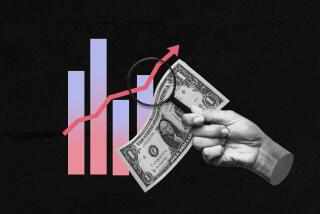How have spending habits changed since â73? More housing. Less saving.
Even with the added cost of smartphones and other technology, American families spend less of their total income today than 40 years ago, according to new research.
But people arenât saving that extra money.
The average person spends 81.2% of his or her post-tax income on food, housing and other expenses, according to ConvergEx Group, a New York-based brokerage.
Thatâs down from the 85% that Americans shelled out for mandatory and discretionary items in 1973.
The analysis doesnât fully explain how and where Americans spend their money. Itâs based on a consumer expenditure survey by the Labor Department that doesnât capture where every dollar goes.
The roughly 14% of unaccounted for income today may go toward expenses such as taxes or debt, but itâs impossible to be sure, said Sarah Millar, the author of the report.
ASK LAZ: Smart answers to consumer questions
Still, itâs clear that Americans arenât socking away the extra money for the future.
âIn short,â according to the report, âspending â and saving â among American consumers is changing, and not necessarily for the better.â
The U.S. saving rate is a fraction of what it used to be â 4.6% today vs. 13% four decades ago, according to the report.
âWhere are we putting the extra money? Not into retirement accounts, stocks, or bonds, clearly,â the report says. â...The 1973 households surveyed are still more or less in decent financial standing today; weâll see how it works out for those of 2012.â
The analysis provides an interesting snapshot of American spending habits.
In 1973, according to ConvergEx, the average U.S. person had post-tax income of $9,700. Annual spending was $8,270, or 85% of income.
Income has risen to about $63,000 today, but per-person expenditures average only 81.2%
That may seem counter-intuitive given that smartphones, Internet access and ubiquitous pay-TV didnât exist in the era of Watergate and the Arab oil embargo.
Americans spend about the same percentage on phone service today (2.4%) as they did in 1973 (2.2%), according to the report. Phone companies have raised cellular rates over time, but thatâs been offset by consumers scrapping their landlines.
Overall housing costs rose to 32.8% of income from 30.8%.
However, cost of so-called âshelter,â which are owned or rented dwellings, jumped to 19.2% from 15.9%. Thatâs due partly to an increase in average home size, to 2,700 square feet from 1,400 square feet in 1970.
A notable cost reduction has come in food, according to the report.
The average family shells out 12.8% at grocery stores and restaurants today vs. 19.3% in 1973. Smaller family size â 2.5 people today vs. 2.9 people in 1973 â explains part but not all of the difference.
Spending on overall transportation has fallen to 17.5% today from 19.3% in 1973, as vehicle purchases and expenses declined to 6.6% from 9.5%.
But the cost of gas and motor oil has increased notably. Itâs at 5.4% today from an elevated 4.2% during the 1973 oil crisis.
One surprising cost-saving: âfloor coverings,â which went from 0.5% in 1973 to nothing today. How to explain it? âThe death of the shag carpet,â Millar surmises in the report.
ALSO:
Most Americans expect to work during âretirement,â poll finds
Does your company have a paltry 401(k) match? This could be why
Alleged wrongdoing by stockbrokers often erased from public records, study finds
Follow Walter Hamilton on Twitter @LATwalter
More to Read
Inside the business of entertainment
The Wide Shot brings you news, analysis and insights on everything from streaming wars to production â and what it all means for the future.
You may occasionally receive promotional content from the Los Angeles Times.










